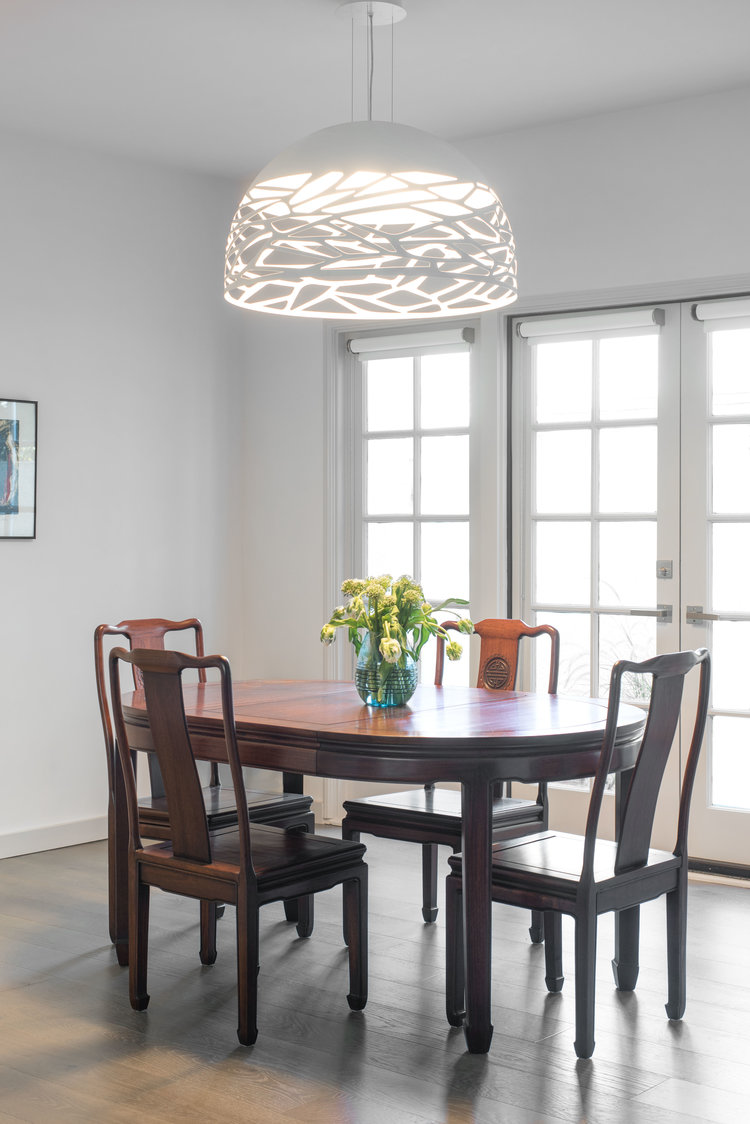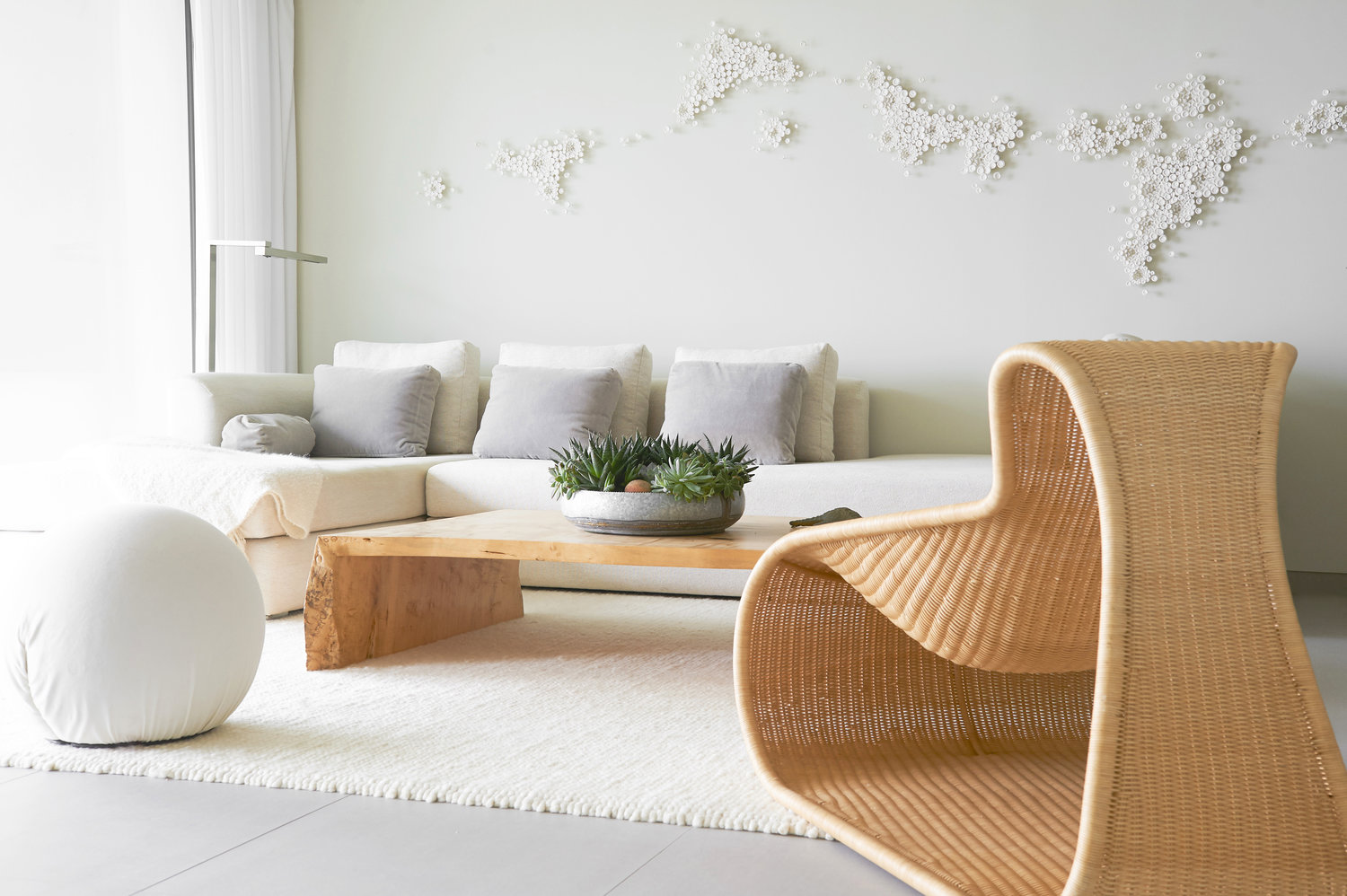Design for a Healthy Mind: Interior Design and Mental Health
/Custom Wall Sconces designed by sarah barnard
It seems that every week, a new article is out asking what is the source of our mental health troubles. Depending who you ask, demanding work schedules or an over-stimulating world could be the culprits. It’s all too often not one thing, but a combination of factors that leave us feeling sensitive, low, or unmotivated. At the center of new conversations emerging on mental health is the effect of our environment on our wellbeing. Taking the care to consider our home design is an important step in seeing how our familiar surroundings impact us. From small adjustments to a total overhaul, the home can transform from a source of stress or isolation to a sanctuary for calm and comfort.
An exercise: pay attention to how you feel as you move about your space from room to room. Where do you spend your time? How do you react looking and living through your space? From the height of the ceilings to the presence of plants, subtle but pervasive factors can improve mood, focus, and alleviate anxiety. Humans intuitively respond to environments that promote productivity, intimacy, and efficiency.
This isn’t a recent development: the practice of Feng Shui, for instance, has a history going back thousands of years. At this point, it is likely you’ll need to consult a compassionate interior designer to help guide the daunting task of creating your ideal, holistic home. They can assist from the smallest details to a total transformation of the space and how you live in it. “You’re never alone in the process,” designer Sarah Barnard says. “Having a second pair of seasoned eyes can bring our attention to the affect our homes and their layouts have on us and our visitors.”
The effects our homes have on us are largely defined by how we use and live within them. Architecture theorist Kate Wagner claims that most of our homes are too separated by function; most of our time is not spent in designated hosting spaces, such as a front room, but in the kitchen and the den. “Large, unused spaces designed for social functions foster isolation instead,” she explains. These isolated areas end up becoming pile-ups for unwanted furniture, or inaccessible simply because they’re too formally separated.
Likewise, small, constricting spaces inhibit creativity and discourage freedom of movement. Laying in a darkened room in the comfort of a bed is difficult for anyone to get out of, even when the sun is shining.
Wagner makes an empathic suggestion to “channel [your] earlier self,” outside of the expectations of space and presentation that comes with creating your home in adulthood. In this project by interior designer Sarah Barnard, natural light and free movement is prioritized. Walls do not constrict, but are left open and accommodating.
Much of what compresses a space isn’t tight walls and low ceilings, but its furniture. A clear and open home is a natural reflection of a clear and open mind. Prioritizing objects of beauty, function, and meaning within your house can be reflected in the popular Konmari Method, or “the life changing magic of tidying up”. Its founder, Marie Kondo, takes inspiration from Feng Shui to ensure that organization and tidiness are a permanent life change, not a cycle for us to endure every few months. She believes that every object in our home brings us joy, and that each object has a specific place where it belongs within in our home. The method suggests we ask ourselves simple questions when we encounter an object we can’t bear to part with: “Does this bring me joy?”
Cherished furniture shouldn’t be thrown away for the sake of self-renewal. In fact, they can be essential to giving a room its individuality. Older furniture pieces that you’ve had for years can be given new life when reinterpreted within the space.
During a revision of a Scandifornian style home, Sarah had the opportunity to place older furniture into a bright, updated, and minimalist aesthetic. A treasured antique dining set, found in Thailand, remained in the dining room; its deep rosewood and impeccable design and detailing brings warm elegance in the new space. The dining set has a new life, and the new rooms feel familiar and fully livable.
Maybe you’ve decided to really start from the ground up: new furniture, fixtures, the works. Avoid the stress that can come from heavy-duty furniture pieces that forbid reorganization and movement. They aren’t active in the home, and an imposing weight or size can compress a room while taking away the opportunity for revitalization and customization.
Consider modern, playful furniture that is light and accessible to move, promoting autonomy in your environment to reorganize as you wish. As an experienced interior designer, Sarah has a deep understanding of the principles of Universal Design, which encourages flexibility, simplicity, and low demands of physical labor throughout the home. This is achieved through seven principles: the designed object or space must be equitable, flexible, intuitive and easy to navigate, stimulate as many sense as possible, safe and tolerant of error, physically undemanding, and with adequate space for free use. When a sensitive and informed designer adheres to these principles, their projects have the benefit of being widely applicable to a variety of needs: from every day appliance use to wide ease of access throughout a home. It makes your home more intuitive.
To make the most of your new space, have systems in place that facilitate organization, tidying, and reward. Cleaning can have therapeutic, empowering effects on the psyche. The areas around us reflect the care we have for ourselves. Interior designers carefully choose pieces or can work with skilled artisans to build furniture to suit your needs, from the perfect chair to expansive organizational racks that can transform the use of a room. Also, this can be where your creativity and distinct personal inspirations shine; a pair of homeowners wanted a cabinet that resembled a type of Japanese locker, getabako. The cabinets were numbered in a sequence that was significant to the husband and wife, culminating in a piece that was unique, functional, and intimately designed. In using the locker, the homeowners would feel comfort and satisfaction at its place in the home.
A cluttered environment has been proven to drain energy and negatively impact our overall mood and self-image. In bringing in new furniture, we want to bring in new systems of living and using it. Wall-based organization is a great way to free up space on the floor. Light, free-standing shelves in this home office provide ample space for books and objects of meaning and beauty. The floor is freed up for movement and active use. All furniture here, fitting for a home office, has a cohesive design and an obvious function, encouraging productivity and serenity.
Echoing the exercise of moving through the home, think of the importance of free and open movement: everything we encounter can be a treasure rather than an obstacle. The importance of possessions is knowing and fully appreciating their use and place in our home. Our home is a space for us to respect, personalize, and flourish with and within.
Just as promoting mental health and clarity through interior design goes back thousands of years, color therapy (also known as chromotherapy or color medicine) is as old as any other medicine, with a history going back centuries. There’s research that points to spectrums of colors even affecting different parts of the body! It’s physical and mental effects are essential.
Does this mean you paint your whole apartment blinding shades of sunshine yellow to spur energy? Not entirely - research points to the contrary. Researchers at Logan Regional Hospital in Logan, Utah discovered that overly vibrant color schemes produce heightened states of unease and anxiety.
Splashes of your favorite color are a given within the home, but we can also look outside for inspiration. In this idyllic guest retreat, Sarah Barnard has used the natural landscape as inspiration for a cohesive palette. Even visitors to the home are invited to a room that is earthy, grounded, and familiar. The prominent presence of green in the bedroom reflects the vibrant trees growing just outside with generous sunlight.
Meanwhile, natural dark wood establishes a sense of warmth and comfort, once again using the surrounding nature as inspiration. The consideration of all senses, particularly touch, creates a holistic and familiar space. Organic textures such as stone, encaustic tile, and wood make us feel - literally - grounded in our environment.
Investing in the space of your home as a part of mental health doesn’t have to be a daunting task. Reach out to an empathic interior designer who understands the importance of the house in your health. With a rich history and vast resources, transforming with a healthy, mindful designer can have incredible effects on your day-to-day life and long-term happiness, letting your home come alive as your mirror.
Sarah Barnard designs healthy, happy, personalized spaces that are deeply connected to nature and art.
To learn more about Sarah Barnard Design, please visit www.SarahBarnard.com.









